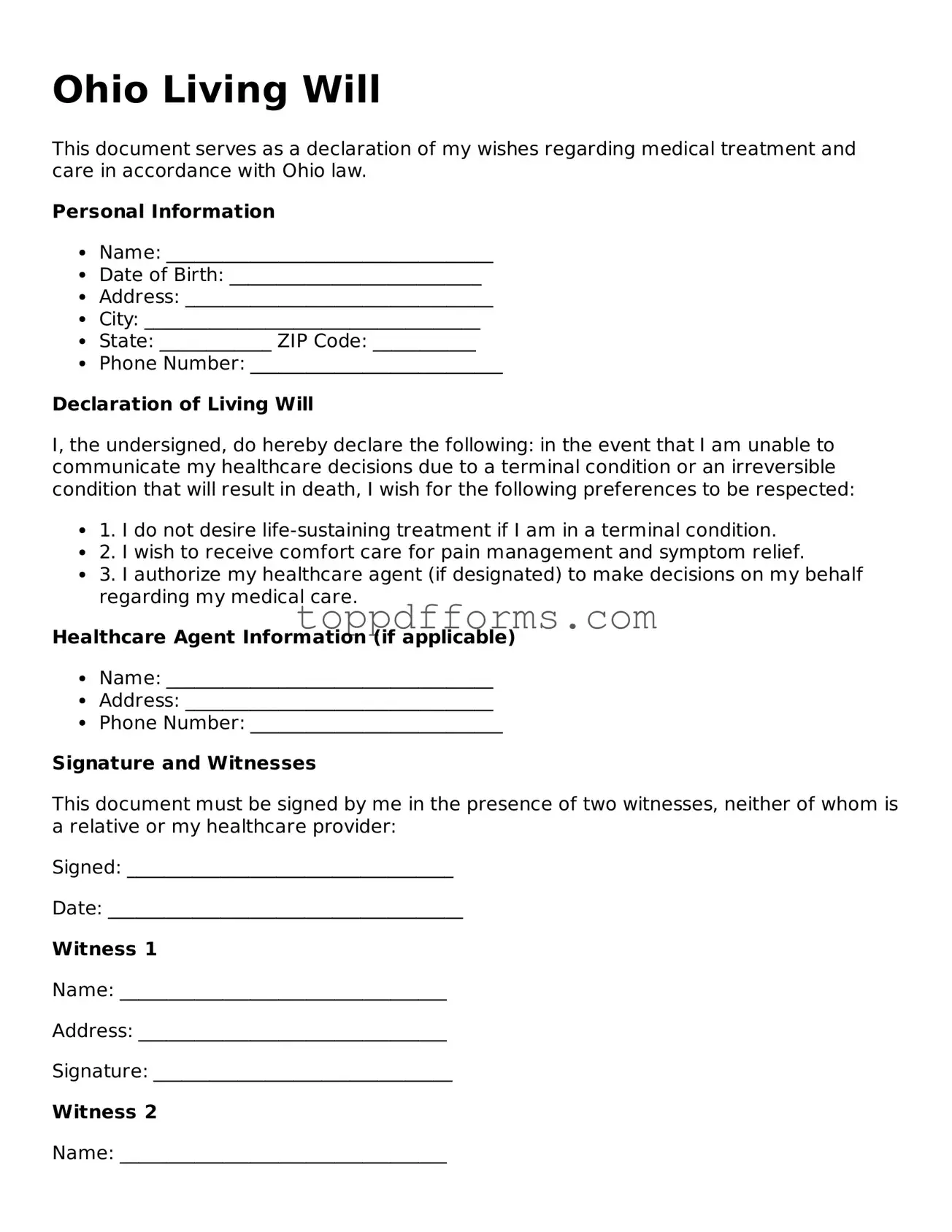What is a Living Will in Ohio?
A Living Will is a legal document that allows individuals to express their wishes regarding medical treatment in the event they become unable to communicate those wishes themselves. In Ohio, this document specifically addresses end-of-life care and can include preferences about life-sustaining treatments, such as mechanical ventilation or feeding tubes. It ensures that your healthcare providers and family members understand your desires regarding medical interventions when you are in a terminal condition or permanently unconscious.
How do I create a Living Will in Ohio?
To create a Living Will in Ohio, you must be at least 18 years old and of sound mind. You can use a standard form provided by the state or consult with an attorney to draft a personalized document. After completing the form, you must sign it in the presence of two witnesses or a notary public. It’s important that the witnesses are not related to you, do not stand to inherit from you, and are not involved in your healthcare. Once signed, provide copies to your healthcare providers and family members to ensure your wishes are known.
Can I change or revoke my Living Will?
Yes, you can change or revoke your Living Will at any time, as long as you are mentally competent. To revoke the document, you can destroy it or create a new Living Will that explicitly states your updated wishes. It is advisable to inform your healthcare providers and family members about any changes to ensure that they are aware of your current preferences. Additionally, you should provide them with a copy of the new document to avoid any confusion during critical situations.
What happens if I do not have a Living Will?
If you do not have a Living Will, your healthcare providers will follow standard medical procedures, which may include aggressive treatment measures, even if they are not in line with your personal wishes. In such cases, family members may be left to make difficult decisions on your behalf, which can lead to disagreements and emotional stress. Having a Living Will helps alleviate this burden by clearly outlining your preferences for medical treatment.
Is a Living Will the same as a Durable Power of Attorney for Healthcare?
No, a Living Will and a Durable Power of Attorney for Healthcare are distinct documents. A Living Will specifies your wishes regarding medical treatment, while a Durable Power of Attorney for Healthcare designates a trusted individual to make healthcare decisions on your behalf if you are unable to do so. You can have both documents in place to ensure that your healthcare preferences are honored and that someone you trust is empowered to make decisions when necessary.
